Bahía de Cádiz Parque Natural, ancient salt pans now a marismas haven for migratory and resident waders and seabirds.
By Nick Nutter | Updated 12 Mar 2022 | Cádiz | Parks |
Login to add to YOUR Favourites or Read Later
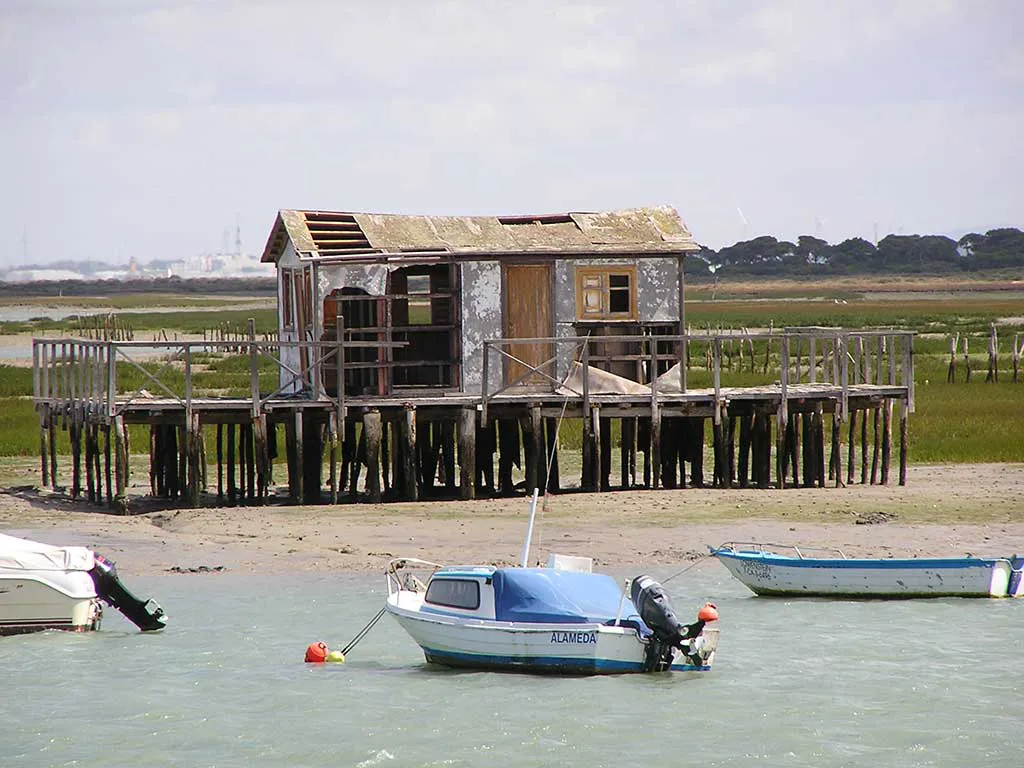
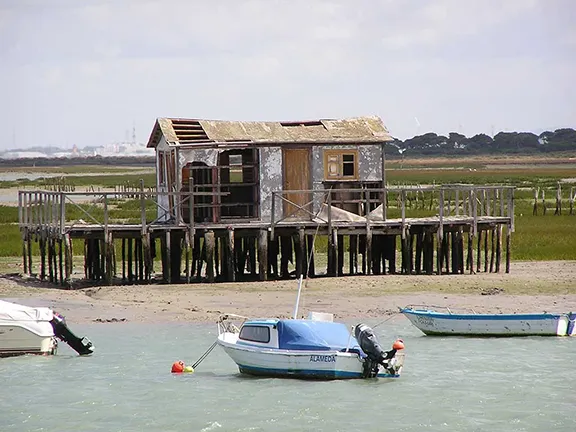
Sancti Petri
The Bahía de Cádiz natural park covers an area of 105 square kilometres, north, east and south of the city of Cadiz. The bay itself is shallow and is a former ancient estuary that was fed by the Rio Guadalette and San Pedro. Around the edges of the bay, apart from some superb beaches, are marismas, or intertidal extension marshes that have been utilised since before the Romans arrived for salt production.
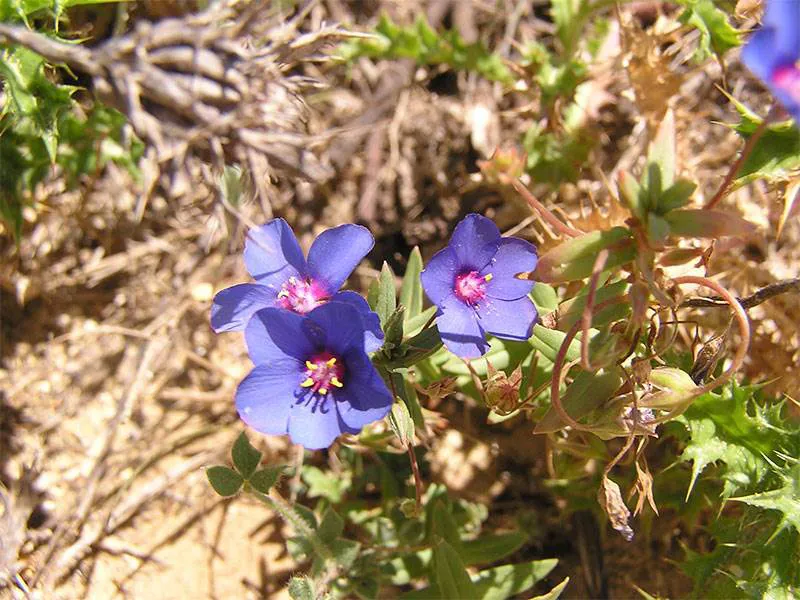
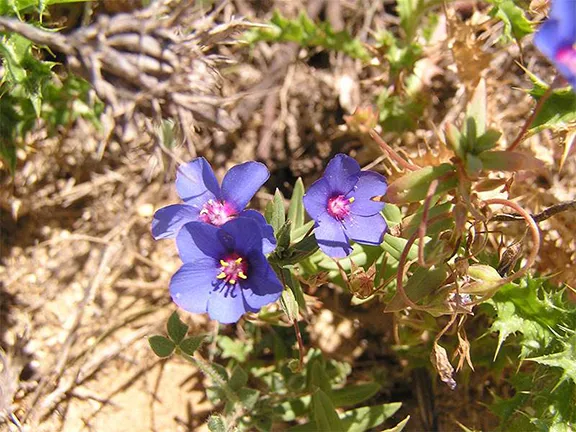
Blue Pimpernel
The area is tidal, and plant life has to be salt resistant. Cord grass, glasswort or maritime purslane, among others, have an important presence, whilst in the transition of the marshland into firm land there are grasses such as rostraria and barren brome On the intertidal plains, rich in nutrients, there are submerged meadows of gracilaria and algae, such as ulva linza and the sea lettuce. These seafloors, rich in food, halfway between The Gibraltar Strait and the Doñana marshes, play an important role in the migratory movements of birds. They enable many birds to winter on the coast: mud-dwelling birds, waders, seagulls, anatidae, coots and water pullets, osprey, common and little terns, that make up some of the largest colonies of the Iberian Peninsula, and increasingly larger numbers of cormorant, are good examples. Shellfish also plays an important role in the waters of the Bay of Cadiz, for both avian and human consumption. The dunes, both moving and established, allow for the presence of a great botanical variety, such as marram grass, spiny thrift and broom; while in its surroundings there are pine forests, like those of Algaida and Los Toruños, where the stone pine shelters an undergrowth able to withstand the winds and salty atmosphere. These forests are a sanctuary for birds such as blackbirds, robins, owls and kestrels, as well as for chameleons, amphibians and mammals like the European hedgehog and the dormouse.
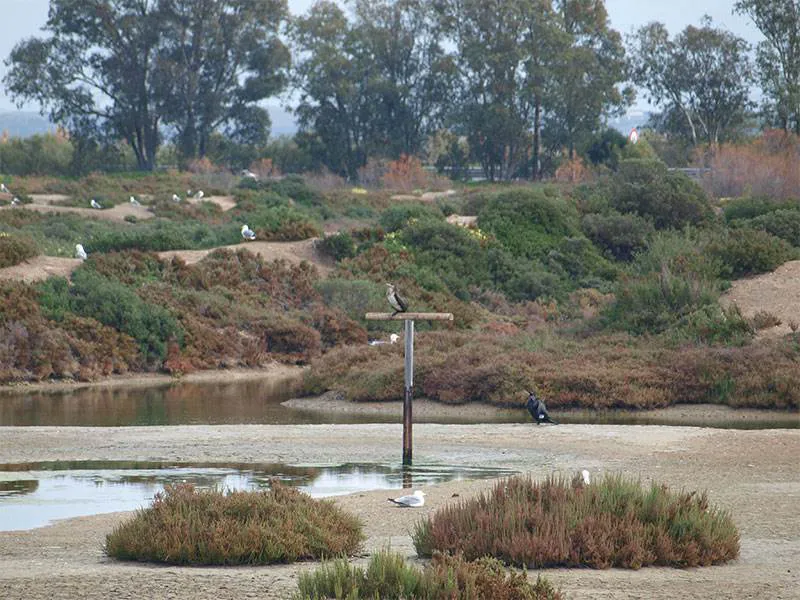
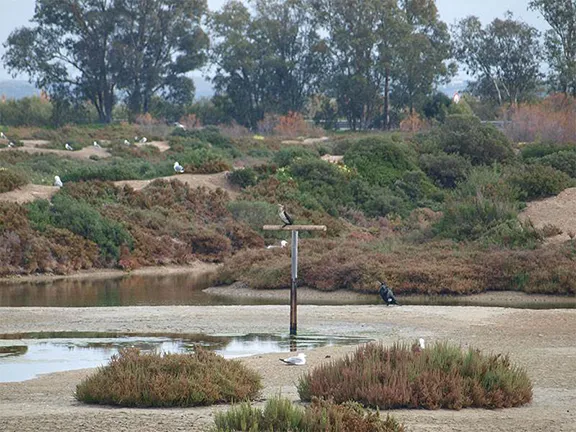
Cormorants
The sea and wind have created the perfect setting to enjoy a boat ride around the bay or fly over the waves practising windsurfing on its many good beaches. You can enter the depths of the sea by practising snorkelling or by kayaking. Discover the rich natural and ethnographic heritage of the area. In the 18th century, there were up to 143 salt mines and a good number of tide mills.
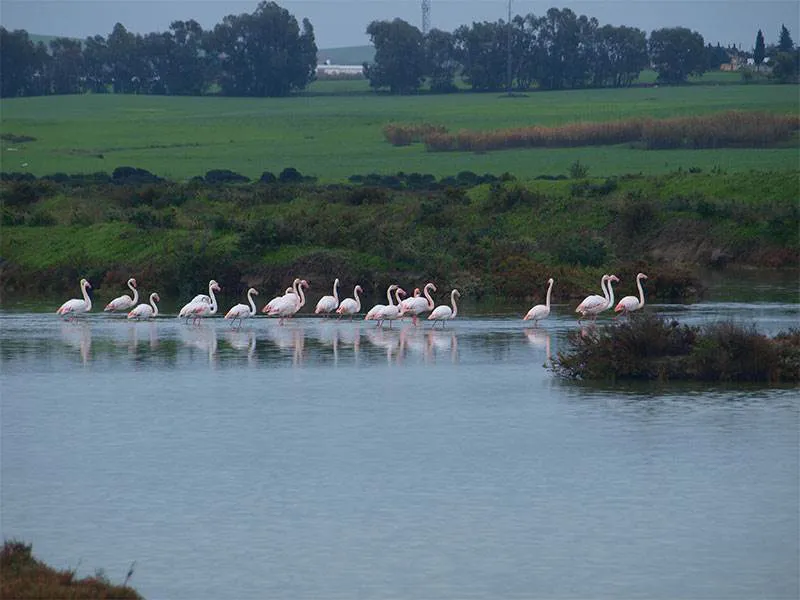
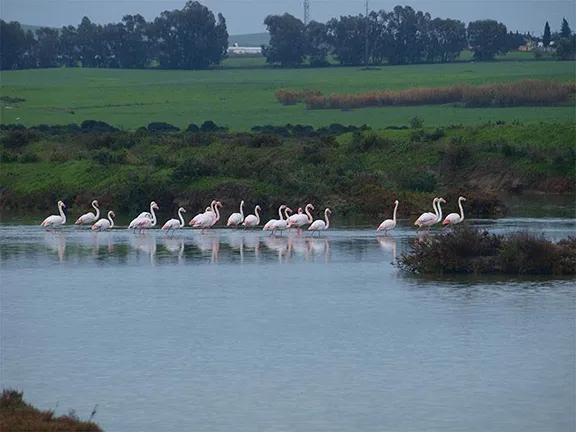
Flamingos
From the visitor's centre at San Fernando, there are seven trails of varying length, for walkers and cyclists, that take you into the marismas. There are also access points at El Trocadero.
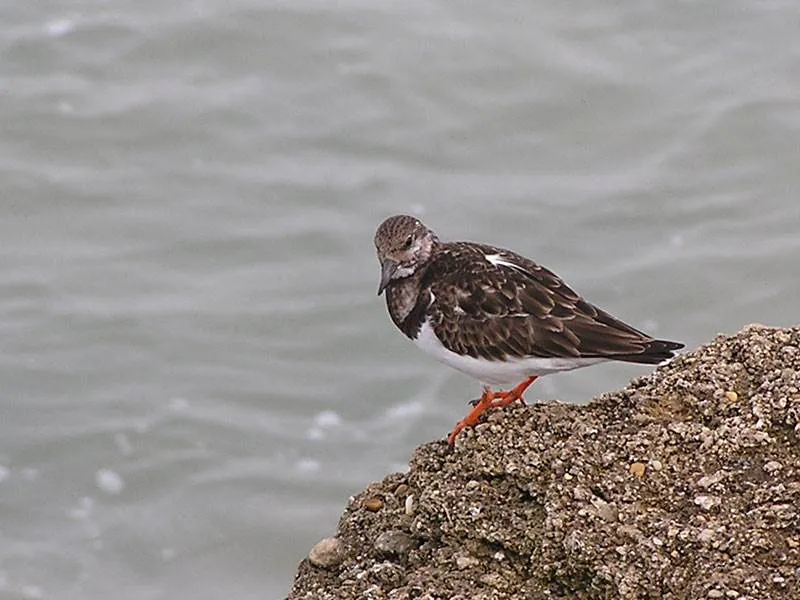
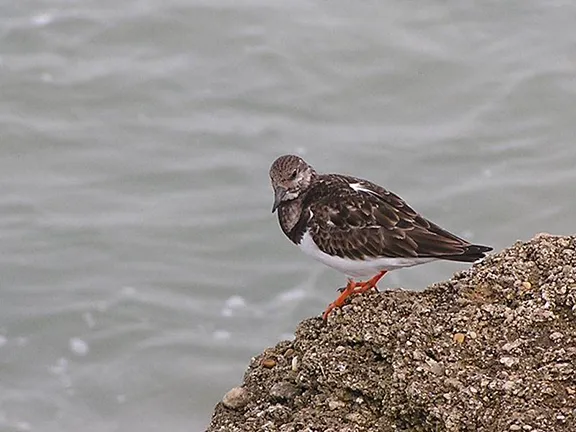
Turnstone
The tidal marshes of Sancti Petri, in Chiclana de la Frontera are a part of the Bahía de Cádiz Parque Natural. It is one of the few areas of the natural park that have not been altered by salt workings. The large forest, Pinar del Coto de Isleta, that occupies the higher ground is likewise untouched. Altogether, the Sancti Petri Paraje Natural allows us to see a coastal area in its natural state.
Half way between the Strait of Gibraltar and the Doñana National Park, it is an important stopping off place for migratory waders in winter and spring. It is also a breeding ground for a number of important species such as the yellow-legged gull, Kentish plover, pied avocet, black-winged stilt and little tern. Resident birds include the woodlark, white stork and fantail warbler (Zitting cisticola).
The Marismas de Sancti Petri Paraje Natural has been declared a Special Protection Area for Birds.
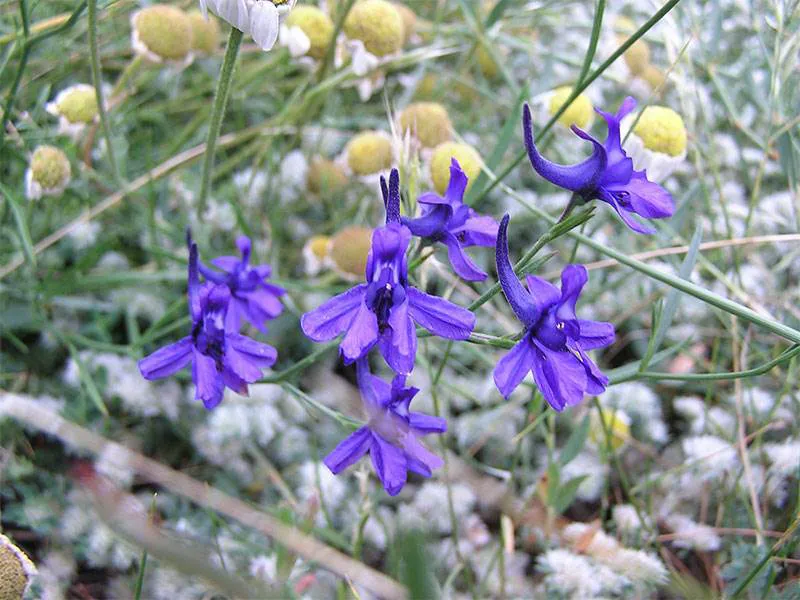
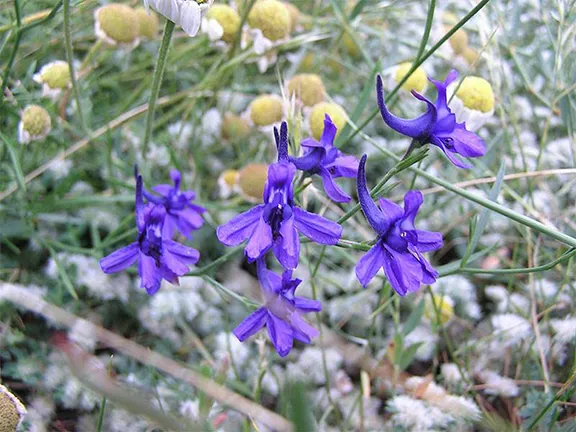
Violet Larkspur
Located in the south of the Bay of Cádiz, southwest of Puerto Real, and separated from the mainland by a tidal channel, La Isla del Trocadero Paraje Natural is part of the Bahía de Cádiz Parque Natural. The island stretches from Puerto Real as far as San Fernando. In addition to its also being a Special Protection Area for Birds, it also has an interesting historical heritage.
On the south of the island you will find the ruins of San Luis Fort, a late 18th century fortified bastion, which formed a part of the fortifications of the Bay of Cádiz. It played a major role during the War of Spanish Succession and the siege of Cádiz between 1808 and 1813 and the Battle of Trocadero in 1823 that effectively ended the Liberal Triennium and restored the absolutist monarch, Fernando VII. Various types of Phoenician and Roman amphorae and the remains of canon balls from the Peninsular War have been found beneath the castle and its surroundings.
The Visitor Centre of the Bay of Cadiz Nature Reserve is in San Fernando (Cadiz). The recently built facilities, a model with regards to sustainability, are located at the Salina of La Leocadia, opposite the Camposoto Beach. The ideal place for a visit to this Nature Reserve, as its facilities offer you diverse information on the area and the activities possible there.